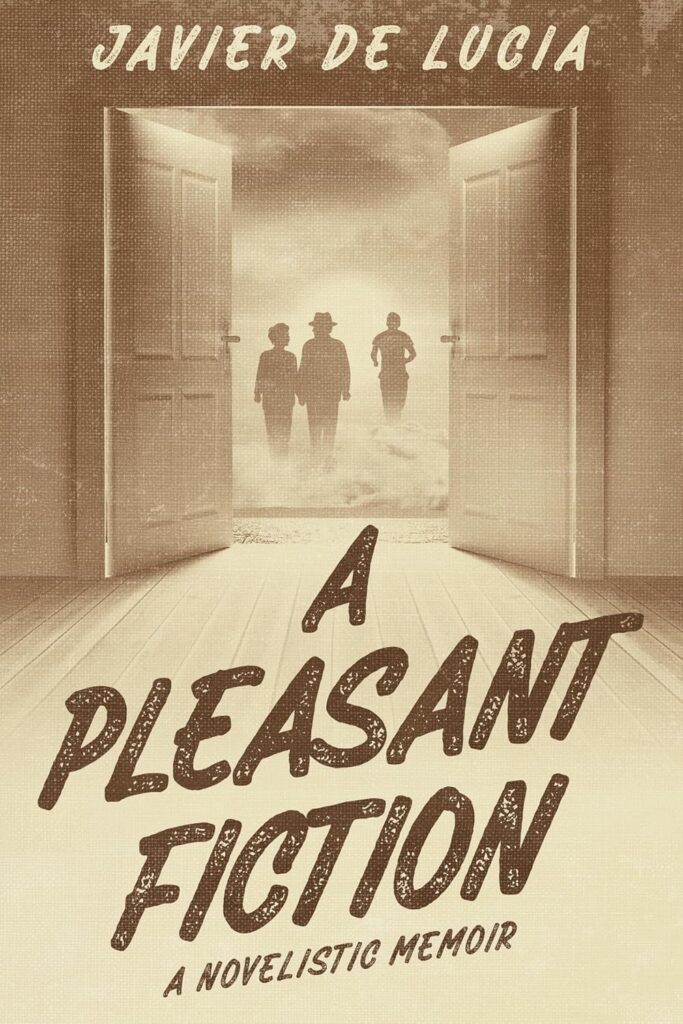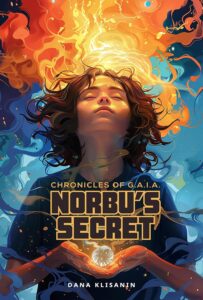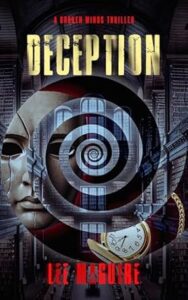May 27, 2025 | Editorial reviews, International Review of Books, Memoir
A Pleasant Fiction: A Novelistic Memoir by Javier De Lucia is perfect for readers who find meaning in quiet, character-driven stories of resilience, compassion, and emotional depth—especially those who appreciate narratives that offer both perspective and hope in the face of life’s harshest trials.
.
Which line stood out from all the others in the book?
“Not everyone has to become their disabled baby brother’s guardian and watch him die in between their parents’ deaths.”
General Summary for Context:
 This isn’t exactly a tearjerker—but it’s not far off, either. At its heart, this is the story of one man’s quiet resilience in the face of relentless tragedy, loss, frustration, and a crisis of faith. He’s not an angry man—just someone who has grown disillusioned with God after a lifetime of hardship. Frankly, if I had gone through even half of what he endures, I’d be screaming at the heavens and everyone in earshot.
This isn’t exactly a tearjerker—but it’s not far off, either. At its heart, this is the story of one man’s quiet resilience in the face of relentless tragedy, loss, frustration, and a crisis of faith. He’s not an angry man—just someone who has grown disillusioned with God after a lifetime of hardship. Frankly, if I had gone through even half of what he endures, I’d be screaming at the heavens and everyone in earshot.
It begs the question: Does God ever ask more of us than we can bear?
The protagonist of this book is, in many ways, my personal hero. How is he still standing after enduring the unimaginable—his wife’s seven miscarriages (yes, seven!), a medically necessary abortion, a brother with severe disabilities who later loses the use of an arm, and the death of both parents? Meanwhile, I found myself upset today because my nail polish had a hint of orange in it. Perspective, much?
This book reminds you what truly matters. It’s deeply human, quietly powerful, and lingers long after the last page.
Concise Review:
This isn’t quite a tearjerker—but it brushes close, in the most human and hopeful of ways. At its heart, this is the story of one man’s journey through profound challenges: personal loss, frustration, and a crisis of faith. Yet what sets this book apart is not the weight of the sorrow, but the quiet strength and joy the protagonist continues to find amid it all.
Despite enduring his wife’s seven miscarriages, the heartbreak of a medically necessary abortion, the daily demands of caring for a severely disabled sibling who later loses use of an arm, and the death of both parents—he never hardens. He never turns bitter. Instead, he remains a gentle, altruistic soul, deeply connected to his wife, his son, and his circle of devoted friends. His career brings him moments of purpose; his family, moments of warmth. In a world that could have broken him, he chooses compassion over despair.
Reading this made me reflect on my own priorities—I mean, I caught myself feeling dramatic over nail polish with an orange tint. Perspective, right? This book doesn’t just make you feel—it makes you recalibrate. A quietly powerful read that reminds us that the capacity for joy and goodness can persist, even under the heaviest of burdens.
General Thoughts on the Novel:

This book compelled me to reflect deeply on my own values—on what truly matters beneath the surface noise of daily life. (Nail polish disasters included.) The protagonist’s journey is marked by profound adversity: not even a fleeting taste of fortune—his family’s brief, ill-fated lottery win—could shield him from life’s unrelenting trials. And yet, he endures. Not with bitterness or cynicism, but with a quiet determination to live meaningfully, to love generously, and to keep moving forward.
What moved me most was not simply his resilience, but the grace with which he faces each setback—personal and professional alike. He emerges not hardened but luminous, retaining a fundamental gentleness and a desire to contribute positively to the lives of others. That, to me, is the essence of true strength. An inspiring and humbling read.
.
READ JAVIER’S BOOK ON AMAZON
Apr 3, 2025 | Editors' Blog, Editorial reviews, International Review of Books, Literary, YA
The Wake of Expectations by Javier De Lucia is perfect for readers who appreciate emotionally intense, unconventional coming-of-age stories that reward patience with a raw and resonant exploration of identity, adolescence, and the messy realities of growing up.
.
Which line stood out from all the others in the book?
So many relationships over the years, some positive, others negative. Some to do with coming-of-age adolescent behavior, definitely, as well as misguided attempts to achieve certain goals (getting laid, etc). One sentence in particular begins the start of one semi-friendship: “There were moments of genuine camaraderie over the years, but the friendship usually was tenuous at best”. (I’d probably call it superficial).
 General Summary for Context:
General Summary for Context:
This novel brims with characters—friends, flings, frenemies, and fleeting encounters—woven through a narrative that spans years of change and growth. At the center of it all is Cal, our dry-witted narrator, who’s just learned that his parents have won the lottery (cue envy), and that he’s been accepted into his dream college. You’d think he’d be celebrating. But no—Cal is too busy reflecting.
Told in his signature self-deprecating tone, Cal’s story is less about triumph than it is about navigating the chaos of life: parties, heartbreaks, awkward encounters, moments of connection and confusion. The novel unfolds as a patchwork of seemingly insignificant events that, together, chart the messy process of growing up.
Some might call it a coming-of-age story. To me, it feels more like a rude awakening—especially when, after a rollercoaster of emotional highs and lows, Cal finds himself asking, “Wait… what happened to the money?”
Concise Review:
This is a highly original and engaging journey into the life of one (seemingly average?) young man. At first, I struggled to keep track of the many people he meets and how they shape—or slip through—his life. The sheer number of encounters can feel dizzying, and initially, I felt the main character lacked depth. But as the story unfolded, I realized that might be the point: he’s still figuring himself out, stumbling through a maze of interactions, often awkward, sometimes tender, and frequently tinged with confusion.
Coming from a family of all girls, I may simply be more familiar with the emotional dramas of growing up female. The adolescent male experience portrayed here—hormonal, uncertain, occasionally crass—felt unfamiliar and, at times, jarring. But it’s also raw and honest in a way that’s hard to look away from.
This isn’t a tidy coming-of-age tale—it’s messier, funnier, and sometimes more frustrating. But it’s real. Maybe that’s what makes it resonate, even if it takes a moment to adjust to the rhythm of the world the author has created.
General Thoughts on the Novel:
 Initially, the sheer volume of characters and shifting relationships made the narrative somewhat difficult to follow. However, once I began keeping a mental ledger of who was who and how each individual related to the protagonist, the story gradually drew me in. The emotional turbulence, the fleeting connections, and the often-conflicted decisions began to cohere into something compelling.
Initially, the sheer volume of characters and shifting relationships made the narrative somewhat difficult to follow. However, once I began keeping a mental ledger of who was who and how each individual related to the protagonist, the story gradually drew me in. The emotional turbulence, the fleeting connections, and the often-conflicted decisions began to cohere into something compelling.
In particular, I found myself deeply frustrated—perhaps even incensed—by the events toward the end, particularly the loss of the money (a mild spoiler, though its impact is central to the story’s arc). That sense of frustration underscored how emotionally involved I had become. I wanted to shake certain characters, to urge them into self-awareness and maturity. In doing so, I realized the narrative had achieved something significant: it had made me care.
This is not a conventional coming-of-age tale. It is raw, sometimes chaotic, and frequently disorienting. But beneath that surface lies a poignant meditation on adolescence, identity, and the often-painful process of growing up. Once emotionally invested, the story resonates with clarity and meaning—and that, perhaps, is the clearest indication that it is a work of real merit.
READ JAVIER’S BOOK ON AMAZON
Mar 20, 2025 | Editorial reviews, Fantasy, International Review of Books, YA
Norbu’s Secret by Dana Klisanin is perfect for adventurous young readers and nostalgic adults who enjoy imaginative storytelling with a blend of excitement, innovation, and relatable challenges.
,
Which line stood out from all the others in the book?
You may live far from the rainforest, like the orchid bee is far from the flowers, but you are vital to the rainforest’s survival. Everyone has a role to play.
 General Summary for Context:
General Summary for Context:
A thrilling eco-adventure through the Amazon, brimming with mystery and danger.
Lexa, Jack, Sage, and Will embark on a perilous journey into the heart of the Amazon, determined to unravel the hidden connections between EverSave, an environmental protection agency; Thistleton Academy, an innovative eco-school; and Chronnite, a shadowy corporation linked to jaguar poaching.
Guided by Norbu, an apprentice at the future G.A.I.A. Headquarters, they follow a trail shaped by a secret use of the quantum actuator—an extraordinary device that enables him to reach out to the organization’s four founders. As the team delves deeper into the jungle, they find an invaluable ally in Remi, whose Achuar family runs a rainforest eco-lodge. With her knowledge of the land and its many perils, she becomes their compass through both the physical and moral challenges that await.
Fast-paced and immersive, this story blends environmental intrigue with high-stakes adventure, making for a compelling and thought-provoking read.
Concise Review:
This is a story I thoroughly enjoyed as an adult and would have absolutely loved as a child. Brimming with adventure, innovative gadgets, and intriguing dream connections, it weaves together excitement and a sense of hope.
What stood out to me was how the challenges of saving the planet weren’t just about confronting corporations or environmental threats but also included relatable struggles—like convincing their parents to let them go. This added a refreshing layer of realism to the narrative, making the story both engaging and authentic.
General Thoughts on the Novel:
 I truly appreciated the story’s emphasis on interconnectedness. As climate change becomes an increasingly urgent issue, eco-anxiety is something I believe will affect more people over time. However, this book offers a refreshing and hopeful perspective, reminding us that even young people can play a vital role in protecting the planet.
I truly appreciated the story’s emphasis on interconnectedness. As climate change becomes an increasingly urgent issue, eco-anxiety is something I believe will affect more people over time. However, this book offers a refreshing and hopeful perspective, reminding us that even young people can play a vital role in protecting the planet.
Through its engaging narrative, it not only raises awareness but also inspires action, making it a meaningful and empowering read.
Find the book here on Amazon!
Nov 1, 2024 | International Review of Books

In
Deception, readers are drawn into a compelling narrative that explores the power of therapy, recovery, and resilience. At the heart of the story is Maegan Mitchell, a courageous young woman who, under the guidance of her compassionate psychologist, Dr. Bryce Davison, makes remarkable strides in overcoming past trauma.
Maegan’s story truly resonated with this reviewer. It provides real emotional depth to this thought provoking novel.
Maegan’s journey inspires both hope and the search for inner strength as we learn about how she rebuilds her life to focus on her academic goals and her vision of a brighter future.
Dr. Davison’s innovative and inspiringly empathetic approach to therapy shines throughout this book, showing how careful guidance and a safe space can empower individuals to reclaim their lives. We see the profound changes that therapy can bring. His commitment to his patients, combined with his own complex backstory, add a poignant layer to the narrative, making him a memorable character.
Federal agent Paul Dean also faces his own journey of recovery. After a harrowing attack leaves him severely wounded and shatters his family, he must confront grief and anger while remaining strong for his children. Dean’s resilience, driven by a desire to uncover the truth and protect his loved ones, is a testament to the enduring strength of the human spirit.
As the story unfolds, a shadowy secret society at the university emerges, testing the characters’ resolve. Their actions lead to chilling revelations.
Deception is a gripping tale that celebrates the positive impact of therapy and the strength it can inspire in those willing to confront their past. Maegan’s and Dean’s journeys remind us of the power of perseverance and hope, and the importance of seeking support when faced with life’s really tough challenges.
Not to be missed. Highly recommended by this reviewer. The International Review of Books.
Click below to see this book on Amazon:
Oct 25, 2024 | Editors' Blog, Historical, International Review of Books
We recommend this book to readers who enjoy fable-like narratives with a blend of myth and wisdom, as it offers a unique perspective on survival through being underestimated, vivid depictions of Timbuktu and desert life, and thought-provoking proverbs, despite some disjointed historical elements.
.
Which line stood out from all the others in the book?
From the beginning: The mysteries of the desert were hidden within its ever-shifting sands, much like the currents and eddies of an ocean. And from the ending: What an old man sees while lying down, a young man can never see even when climbing a tree.
.
 General Summary for Context:
General Summary for Context:
The author introduces an intriguing protagonist—an aging scholar from the renowned University of Timbuktu—whose journey home sets the stage for an epic tale. As the story unfolds, a diverse cast of characters and subplots enrich the narrative, including encounters with zombies and legendary warriors, firmly rooting the novel in the fantasy genre. However, it is equally grounded in history, with the author skillfully weaving in historical events, making it a unique blend of fantasy and historical fiction. While this genre mix is innovative and refreshing, it may present a challenge when it comes to marketing due to its unconventional nature.
.
Concise Review:
Cazembi, a wise and revered scholar, embarks on a perilous journey back to the University of Timbuktu. But the year is 1591, and Africa is swept by a tide of change. Fearing the dangers of crossing the Sahara, Cazembi joins forces with two merchant brothers and the legendary warrior Ayaan. Their journey soon turns violent as they face not only a rival faction but also the horrors of the undead.The story masterfully follows Cazembi and his companions through a series of gripping trials, offering plenty of intense battle scenes. Yet beneath the excitement of swordplay lies a deeper layer of quiet wisdom, expressed through proverbs passed down from the elders.
I particularly enjoyed the rich historical detail, which vividly captures life in the desert, with all its myths and legends. While the book incorporates elements of fantasy, it is firmly grounded in historical fact, making it both entertaining and educational. The inclusion of African proverbs, such as “A butterfly cannot think it is a bird just because it can fly,” added a layer of cultural depth that I found captivating.
.
General Thoughts on the Novel:
 While I typically don’t enjoy books where all the main characters meet a tragic end, the premise of Kho—the character who survives not by being the wisest or the bravest, but by being the most underestimated—imbues the story with the feeling of a fable or a myth. This unique angle adds a timeless quality to the narrative, reminiscent of ancient legends.However, I found that the historical elements sometimes felt disjointed. Certain parts, particularly in the last chapter, read more like a copy-and-paste from Wikipedia rather than being seamlessly integrated into the plot. This detracted from the flow of the story, making the historical context feel a bit forced at times.That said, I thoroughly enjoyed learning about Timbuktu and the lives of the desert people, which the author brought to life in vivid detail. What truly enriched the experience were the numerous proverbs and wise sayings scattered throughout the text. I found myself jotting many of them down, as they offered thought-provoking insights worth reflecting on.
While I typically don’t enjoy books where all the main characters meet a tragic end, the premise of Kho—the character who survives not by being the wisest or the bravest, but by being the most underestimated—imbues the story with the feeling of a fable or a myth. This unique angle adds a timeless quality to the narrative, reminiscent of ancient legends.However, I found that the historical elements sometimes felt disjointed. Certain parts, particularly in the last chapter, read more like a copy-and-paste from Wikipedia rather than being seamlessly integrated into the plot. This detracted from the flow of the story, making the historical context feel a bit forced at times.That said, I thoroughly enjoyed learning about Timbuktu and the lives of the desert people, which the author brought to life in vivid detail. What truly enriched the experience were the numerous proverbs and wise sayings scattered throughout the text. I found myself jotting many of them down, as they offered thought-provoking insights worth reflecting on.
Overall, despite some issues with the historical integration, the book’s blend of wisdom and myth makes for an engaging and memorable read.
.
Sojourner by Ayaan Pettus is available on Amazon.
Oct 16, 2024 | Editors' Blog, International Review of Books
How we rate this book: American Renaissance is must-read for fans of intellectual intrigue and fast-paced action.
Which line stood out from all the others in the book?
“Do you really, soldier? Cause I’m referring to this notion that the insignificant details of your existence somehow have any power to save the planet, change the world, get the girl, or make this Earth a more peaceful and better place.
.
 General Summary for Context:
General Summary for Context:
The novel centres around the rise and ambition of a revolutionary young American artist who, through his groundbreaking and controversial theory on art history at the turn of the millennium, ignites a global storm. His radical ideas challenge the very foundations of traditional art and quickly attract the attention of a violent religious sect. This group, interpreting his artistic vision as a divine revelation, becomes increasingly fanatical, evolving into a movement that threatens to destabilize world peace.
Set against the backdrop of Paris in the 1990s, the novel is not only an intense exploration of one man’s artistic ambitions but also a scathing critique of the postmodern art scene. Through the lens of this ambitious artist’s rise, the story delves into the cultural and philosophical debates of the time, examining the commercialism, elitism, and pretensions that dominated the art world. As the protagonist navigates the often cutthroat and self-indulgent world of Parisian art, he finds himself at odds with both the establishment and the radical religious group that claims to follow his ideas, creating a complex and dangerous dynamic.
At its heart, the novel explores themes of artistic integrity, the power of ideas, and the unintended consequences of creative expression. The protagonist’s journey highlights the intersection of art, religion, and politics, forcing both him and the reader to confront the question: Can art, once released into the world, still be controlled by its creator, or does it take on a life—and threat—of its own? As tensions escalate, the narrative pushes toward a dramatic climax, where the fate of not just the art world but global stability hangs in the balance.
.
Concise Review:
The story follows the rise of a young American artist, a revolutionary figure with a radical theory about the evolution of art history at the turn of the millennium. His bold ideas, which challenge long-held artistic traditions and redefine the role of art in society, quickly garner attention—but not just from critics and scholars. His theory unintentionally sparks the interest of a violent religious sect that interprets his work as a divine message, giving rise to a dangerous following. As the movement grows, the artist’s once-intellectual revolution becomes the catalyst for global instability, with the extremist group threatening world peace in the name of his ideas.
Set against the vibrant yet fractured postmodern art scene of 1990s Paris, the novel also critiques the pretensions, elitism, and commercialization that dominated the art world during this era. The artist’s journey through this world exposes the deep philosophical and cultural debates of the time, as well as the clash between artistic integrity and the pressures of fame. As he navigates the art world’s convoluted politics, he is forced to confront the unintended consequences of his theory—how ideas, once unleashed, can be co-opted by forces beyond control.
Through this lens, the story examines themes of creativity, power, and the responsibility that comes with revolutionizing thought. It raises profound questions about the role of art in society and how easily it can be twisted into a tool for both liberation and destruction. The artist’s struggle to reclaim his work, and his eventual reckoning with the chaos it has inspired, drives the narrative toward a high-stakes conflict where the fate of global harmony and artistic freedom are intertwined.
.
General Thoughts on the Novel:
 In this captivating first installment of a bold and ambitious trilogy, the author takes readers on a high-octane journey into the world of art, politics, and espionage. Set in the vibrant yet turbulent landscape of Paris at the turn of the millennium, the story follows the rise of a revolutionary young artist whose radical theory on art history ignites a global firestorm. What begins as a groundbreaking artistic philosophy soon attracts a violent religious faction, transforming his creative vision into a catalyst for political unrest and the potential collapse of world peace.
In this captivating first installment of a bold and ambitious trilogy, the author takes readers on a high-octane journey into the world of art, politics, and espionage. Set in the vibrant yet turbulent landscape of Paris at the turn of the millennium, the story follows the rise of a revolutionary young artist whose radical theory on art history ignites a global firestorm. What begins as a groundbreaking artistic philosophy soon attracts a violent religious faction, transforming his creative vision into a catalyst for political unrest and the potential collapse of world peace.
The narrative skillfully weaves together art and intrigue, anchored by a shocking discovery during the infamous FBI raid at Mar-a-Lago. Declassified papers and the private diaries of a compromised government informer reveal a series of dark historical crimes tied to the artist’s tragic ambition. The novel deftly explores the collision of creativity and ideology, raising questions about the power of art and the unintended consequences of revolutionary ideas.
This gripping spy thriller and murder mystery unfolds with relentless tension, as layers of deception and danger are unraveled. The author masterfully captures the tension and complexity of a world in which contemporary artists are caught in the crossfire of political forces seeking to exploit their work for ideological gain. The portrayal of the postmodern art scene in 1990s Paris serves as both a backdrop and a critique, providing a rich, textured setting for the unfolding drama.
A complex, multilayered plot challenges readers to engage deeply with the narrative, as the story’s many ramifications are revealed. Combining art history, political intrigue, and fast-paced action, this novel is a thought-provoking exploration of the intersection of creativity and power. Readers who appreciate high-stakes international thrillers with intellectual depth will find this book impossible to put down.
Perfect for fans of espionage, art history, and intricate narratives, this first entry sets the stage for a trilogy that promises to be as thought-provoking as it is thrilling.
.
 This isn’t exactly a tearjerker—but it’s not far off, either. At its heart, this is the story of one man’s quiet resilience in the face of relentless tragedy, loss, frustration, and a crisis of faith. He’s not an angry man—just someone who has grown disillusioned with God after a lifetime of hardship. Frankly, if I had gone through even half of what he endures, I’d be screaming at the heavens and everyone in earshot.
This isn’t exactly a tearjerker—but it’s not far off, either. At its heart, this is the story of one man’s quiet resilience in the face of relentless tragedy, loss, frustration, and a crisis of faith. He’s not an angry man—just someone who has grown disillusioned with God after a lifetime of hardship. Frankly, if I had gone through even half of what he endures, I’d be screaming at the heavens and everyone in earshot.



 I truly appreciated the story’s emphasis on interconnectedness. As climate change becomes an increasingly urgent issue, eco-anxiety is something I believe will affect more people over time. However, this book offers a refreshing and hopeful perspective, reminding us that even young people can play a vital role in protecting the planet.
I truly appreciated the story’s emphasis on interconnectedness. As climate change becomes an increasingly urgent issue, eco-anxiety is something I believe will affect more people over time. However, this book offers a refreshing and hopeful perspective, reminding us that even young people can play a vital role in protecting the planet.

 While I typically don’t enjoy books where all the main characters meet a tragic end, the premise of Kho—the character who survives not by being the wisest or the bravest, but by being the most underestimated—imbues the story with the feeling of a fable or a myth. This unique angle adds a timeless quality to the narrative, reminiscent of ancient legends.However, I found that the historical elements sometimes felt disjointed. Certain parts, particularly in the last chapter, read more like a copy-and-paste from Wikipedia rather than being seamlessly integrated into the plot. This detracted from the flow of the story, making the historical context feel a bit forced at times.That said, I thoroughly enjoyed learning about Timbuktu and the lives of the desert people, which the author brought to life in vivid detail. What truly enriched the experience were the numerous proverbs and wise sayings scattered throughout the text. I found myself jotting many of them down, as they offered thought-provoking insights worth reflecting on.
While I typically don’t enjoy books where all the main characters meet a tragic end, the premise of Kho—the character who survives not by being the wisest or the bravest, but by being the most underestimated—imbues the story with the feeling of a fable or a myth. This unique angle adds a timeless quality to the narrative, reminiscent of ancient legends.However, I found that the historical elements sometimes felt disjointed. Certain parts, particularly in the last chapter, read more like a copy-and-paste from Wikipedia rather than being seamlessly integrated into the plot. This detracted from the flow of the story, making the historical context feel a bit forced at times.That said, I thoroughly enjoyed learning about Timbuktu and the lives of the desert people, which the author brought to life in vivid detail. What truly enriched the experience were the numerous proverbs and wise sayings scattered throughout the text. I found myself jotting many of them down, as they offered thought-provoking insights worth reflecting on.

